I have always been a Claussen Kosher Dill Pickle fan. Forever. I don’t like sweet pickles or bread and butter pickles, they just aren’t my thing. Claussen just tastes better, in my opinion, I don’t even like the shelf brand dill pickles. They are either too sweet or too tangy. That’s why I posted this Claussen pickle recipe several years ago.

Refrigerator pickles are a lot easier to make because they don’t require using the traditional canning process. That also means they can’t be stored on a shelf in the basement or in the pantry, they must live in the refrigerator.
Recipe for Claussen Pickles at Home
Last year I made some pickles with the canning method and the recipe that I used had a very high vinegar to water ratio. So they were far too vinegary for me to eat straight from the jar, which is one of my favorite things, though they were great on burgers and in potato salad!

So I started my search for a Claussen copycat. I found this one but it used apple cider vinegar. I as concerned that would create a sweet pickle, which I don’t like, even though the author of that recipe is just like me. Yuk to sweet pickles!
So I looked at the actual Claussen ingredient label and it said they used distilled white vinegar. Some of the ingredients were different too, so I decided to use the recipe that I found as a jumping off point and created my own version.
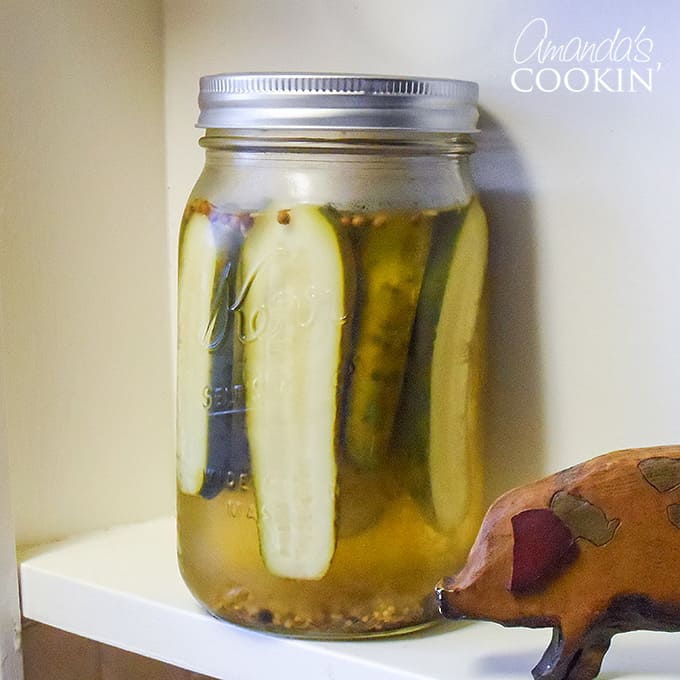
The verdict? Everyone in this house loves them! They aren’t exactly like Claussen, but pretty dang close! Close enough that they get devoured by everyone in this house.
They are actually fun for me to make. So while it would certainly be easier for me to grab a jar of Claussen from the grocery store, and I probably still will now and then, I love making my own.
My first batch was a bit cloudy, and they also had a distinctive mustard flavor. So I cut back the mustard seed in the second batch and I believe we now have a winner. :)
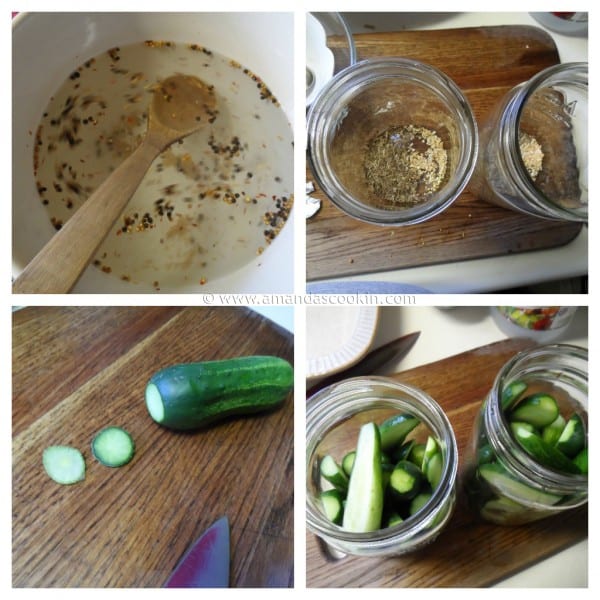
You’ll make the brine first, it’s easiest to do it in a 2-quart pitcher. You’ll see me mixing the brine in a bowl in the picture above. Don’t, it’s an extra step, just use a pitcher. Put the dill seed and dried garlic in the jars.
Now, make sure you give your pickling cucumbers a good rinse, make sure there’s no dirt. Trim the blossom end, I trim both ends, then cut in half lengthwise and distribute in your jars.
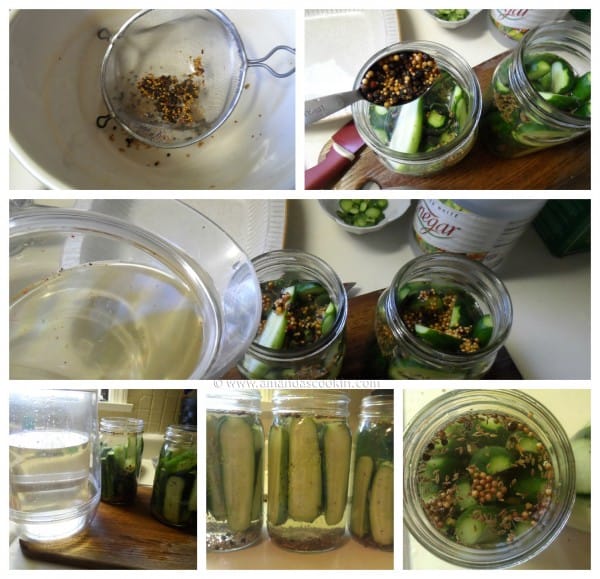
Before adding your brine, strain out the solids. Distribute the solids evenly among the two jars, then add brine. You will have leftover brine that can be discarded when you are all done.
When you perch the kid on your jars, you want air to be able to get in and gases to be able to escape.

I actually put my pickles in one big pot now and then move them to a large covered glass container in the fridge instead of using jars now. Someone in the comments asked for a picture of perching the lid, you can see that above.

This is what they will look like after a day or so. They usually take 2-4 days. My first batch took the full four days while my second batch was ready in two and a half days. I think the difference was that I actually used three jars and they weren’t packed as tightly.
Enjoy – crunch!
Troubleshooting your pickles
Scum or film on top – During your first few days, fermentation takes place. You will probably see bubbles rising to the surface and may see some “scum” forming on the surface. Skim this off and discard. This is a completely normal step in the fermentation process.
White sediment at the bottom of the jar – According to Colorado State University, “A white sediment at the bottom of the jar may be caused by anti-caking agents in the salt or by the fermenting bacteria. Neither cause is harmful.”
According to Colorado State University “…factors that lead to spoilage include failure to remove blossom ends, failure to thoroughly wash products to be pickled, not removing the scum that accumulates on curing brines, using a weak brine or vinegar solution, not keeping the pickles covered with brine throughout the curing process, using deteriorated ingredients such as moldy garlic or decayed spices, or storing the pickles at too warm a temperature.”
You can download the complete PDF document from The Colorado State University here.
Important Tips to Note
The Blossom End
The blossom end of the cucumber (the end opposite from the stem) contains an enzyme that can make your pickles turn mushy. Always cut it off, I cut off both ends for good measure and to keep them uniform.
Vinegar
Use vinegar that has at least 5% acidity. Don’t reduce the vinegar in this recipe.
Salt
Only use pickling salt or coarse (NOT flaky) Kosher salt, though I always use pickling salt. Table salt contains an anti-caking agent that causes the brine to get cloudy. If you use table salt, it’s still safe, but you will have a cloudy jar of pickles with white sediment at the bottom.
Cucumber Types
Use cucumbers that are of the knobby variety, grown specifically for pickling. Check seed catalogs to find the different varieties. Cucumbers with a wax coating are not recommended as the brine will not be able to penetrate them. When selecting cucumbers, be sure that they are firm and not soft.
Wash Your Hands!
It’s tempting to reach in and turn your cucumbers, but please make sure you wash your hands first. Introducing any foreign oil or material from your skin could cause problems with your brine.
When your pickles are all gone, do you pour the pickle juice down the drain? Instead, try these ideas for reusing pickle juice! Looking for a unique recipe to try with your freshly make pickles? Here’s a Grilled Tomato Relish that’s great on burgers and dogs!

This Claussen pickle recipe was originally published here on September 18, 2012
More Related Recipes
- Cucumber Salad
- Sweet Corn and Chickpea Salad
- Grilled Corn and Zucchini Salad
- Pickled Beets
- Pickled Onions
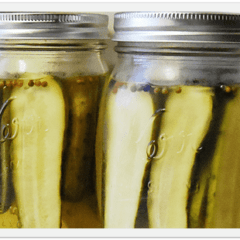
Homemade Claussen Pickles Copycat
IMPORTANT – There are often Frequently Asked Questions within the blog post that you may find helpful. Simply scroll back up to read them!
Print It Rate ItIngredients
- 20-25 small to medium pickling cucumbers
- 2 quarts cold water
- ½ cup white vinegar
- ⅓ cup canning/pickling salt or coarse Kosher salt
- 1 teaspoon coriander seed
- ½ teaspoon mustard seed
- ¼ teaspoon red pepper flakes
- 1 tablespoon black peppercorns
- 1 tablespoon dill seed
- ¼ teaspoon dried garlic
- Fine mesh colander
- 4- cup measuring cup
Instructions
- To make the brine, combine water and vinegar in a large pitcher. Add salt, coriander seed, mustard seed, red pepper flakes and black peppercorns. Stir until salt is dissolved. Set aside.
- Wash cucumbers in water and trim 1/8-inch off of the blossom end of each one. Slice each cucumber in half lengthwise.
- Divide the dill seed and dried garlic evenly between two clean quart sized jars. Fill jars with cucumber halves, fitting as many in as you can, they may be snug!
- Stir brine again to mix ingredients. Place a fine mesh colander over a large bowl or measuring cup. Pour brine through the colander, catching the brine solids in the colander. DO NOT discard!
- NOTE: You will not be able to fit all the water in this measuring cup or in the two jars. The goal here is to save the brine solids and use them, you will be discarding the left over vinegar and water mixture when finished.
- Once all the solids have been removed from the brine, distribute them evenly among the jars. Using the brine liquid in the measuring cup, pour into the jars until all the cucumbers are covered.
- Your brine level should cover your cucumbers and reach the bottom of the jar neck where the twisting begins. The cucumbers will also release some liquid as they brine, so don’t overfill the jar. Discard any remaining brine liquid.
- Cover lightly with a lid perched on top but DO NOT close and seal. Leave on the counter (out of direct sunlight) for 1 day, then move to the refrigerator for 2-3 more days, or until the cucumbers taste like pickles throughout.
- Secure lids on jars and refrigerate for up to six months.
Nutrition
Amanda Davis
Latest posts by Amanda Davis (see all)
- Chocolate Covered Strawberries - January 20, 2025
- Cauliflower Pizza Crust - January 13, 2025
- Keto Peanut Butter Cookies - January 9, 2025

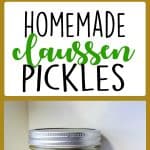
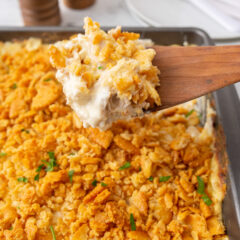
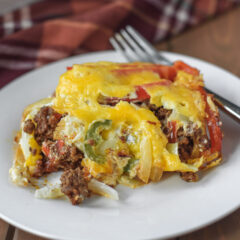







Leah says
I have made this recipe a dozen times and I am never disappointed. We are true blue Claussen pickle lovers and this recipe is identical, as far as we can tell. I add extra garlic and sometimes a red pepper for more flavor. Adding pickle crisper is a solution to soggy pickles. I would not skip that, for sure. We get crisp, tart, tangy, garlicky pickles every time. Thank you so much for posting this recipe.